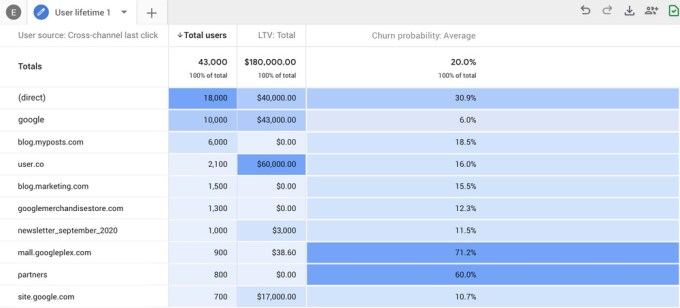If you ever doubted the hunger brands have for more and better information about consumers, you only need to look at Twilio buying customer data startup Segment this week for $3.2 billion. Google sees this the same thing as everyone else, and today it introduced updates to Google Analytics to help companies understand their customers better (especially in conjunction with related Google tools).
Vidhya Srinivasan vice president of measurement, analytics and buying platforms at Google wrote in a company blog post introducing the new features that the company sees this changing customer-brand dynamic due to COVID, and it wants to assist by adding new features that help marketers achieve their goals, whatever those may be.
One way to achieve this is by infusing analytics with machine learning to help highlight data automatically that’s important to marketers using the platform. “[Google Analytics] has machine learning at its core to automatically surface helpful insights and gives you a complete understanding of your customers across devices and platforms,” Srinivasan wrote in the blog post.
The idea behind the update is to give marketers access to more information they care about most by using that machine learning to surface data like which groups of customers are most likely to buy and which are most likely to churn, the very types of information marketing (and sales) teams need to try make proactive moves to keep customers from leaving or conversely turning those ready to buy into sales.
If it works as described, it can give marketers a way to measure their performance with each customer or group of customers across their entire lifecycle, which is especially important during COVID when customer needs are constantly changing.
Of course, this being a Google product it’s designed to play nicely with Google Ads, YouTube and other tools like GMail and Google Search along with non-Google channels. As Srinivasan wrote:
The new approach also makes it possible to address longtime advertiser requests. Because the new Analytics can measure app and web interactions together, it can include conversions from YouTube engaged views that occur in-app and on the web in reports. Seeing conversions from YouTube video views alongside conversions from Google and non-Google paid channels, and organic channels like Google Search, social, and email, helps you understand the combined impact of all your marketing efforts.
The company is also trying to future proof analytics with an eye toward stricter privacy laws like GDPR in Europe or CCPA in California by using modeling to fill in gaps in information when you can’t use cookies or other tracking software.
All of this is designed to help marketers, caught in trying times with a shifting regulatory landscape to better understand customer needs and deliver them what they want when they want it — when they’re just trying to keep the customers satisfied.




